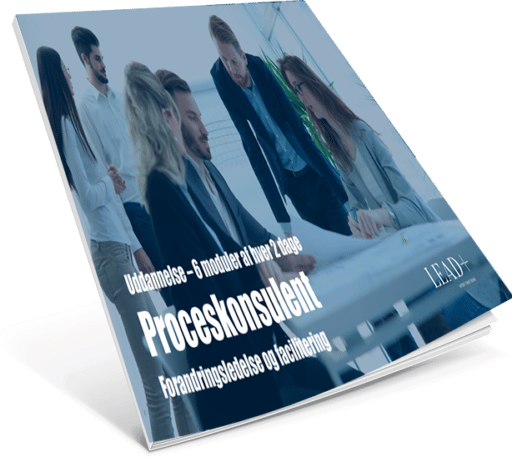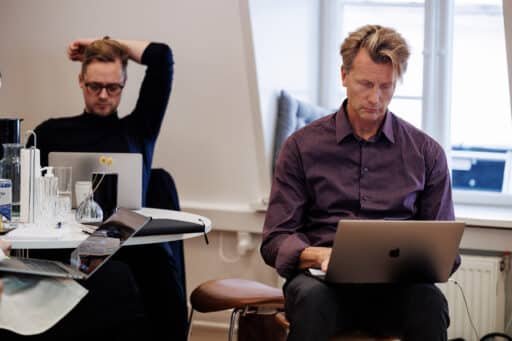Good process facilitation can be crucial to the success of any project or change in an organization. If you want to be a good facilitator, you need to be able to create an open and safe atmosphere where participants can work effectively together to achieve a common goal(s).
Mastering good and effective process facilitation is an important skill that can help your organization and its projects succeed in achieving their goals. Traditionally, facilitation has not received much recognition, but it has proven to be an effective and rewarding method for developing internal or external processes in a company. However, facilitating in practice requires a certain technique and human understanding. In this article, we take a look at facilitation as a concept and process - and give you concrete tools to create successful facilitation.
What is facilitation and what does it mean?
Most people have been part of a project where either you or others have had the feeling that there was no control over the direction or outcome of the process you were going through. This was most likely due to the lack of a facilitator.
As a word, facilitation comes from the Latin "facilis", meaning "easy to do". The role of a facilitator is to initiate a process that leads to a given goal without being an active part of it.
Facilitation can be used for a wide range of purposes, including brainstorming, decision-making, problem-solving and evaluating results. The central idea behind facilitation is to help an organization or group achieve their goals more effectively, and with greater commitment and collaboration than they would have achieved without a facilitator.
How do you facilitate?
Facilitation is a process where a facilitator helps a group achieve their goals by facilitating and managing their interactions and dialog. A facilitator is a neutral third party who does not participate in the content of the meeting or process, but instead focuses on creating an open and safe atmosphere for participants to share their ideas and views freely and constructively. The facilitator uses a range of techniques and skills to manage the process, including creating a clear agenda, building trust with participants, managing any conflicts and resistance, and ensuring that all participants have the opportunity to contribute and be heard.
What makes a good facilitator?
Being a good facilitator requires a range of skills. A good facilitator can help manage processes, communicate clearly, ensure participants feel heard and engaged, and deal with any conflicts and resistance effectively. The facilitator can also help improve communication and collaboration between employees and ensure the process stays on schedule and achieves the desired results.
TIP! Read our article, The three domains of communicationn, to learn more about the domain theory and how to better recognize disagreements and how to stop them before a conflict arises.
As a facilitator, it's your job to set the stage. You need to create the framework and define the tools that employees need to complete the task at hand. The most important task of the framework you create for the task at hand is that employees can immerse themselves and feel safe so they can deliver their best and make choices based on the most optimal conditions. In reality, as a facilitator you are a process leaderwho takes responsibility for the process that your employees or group must go through to reach the goal.
Want to be even better equipped to manage processes?
LEAD's research-based process consultant training gives you the methods to design, facilitate and lead strategic development processes and changes to create the impact you need.
This is an education for those who work with development, processes and change management.
Read more about the process consultant training here
Facilitation in practice: Process tools
In practice, facilitation requires a range of skills and techniques to ensure the process runs efficiently and the desired results are achieved.
Here are some examples of process tools that you can use to manage the process in your work as a facilitator:
- The agendaA clear and structured agenda is essential for effective facilitation. The agenda should include objectives, topics, timeline and participant roles.
- IntroductionA welcome and introduction to the process and you as a facilitator can help build trust and create an open atmosphere. It can also be useful to do a round-robin exercise where participants introduce themselves and their expectations of the process.
- BrainstormingBrainstorming is a technique that can be used to generate many ideas and solutions in a short period of time. Participants are encouraged to come up with as many ideas as possible and their contributions are recorded on a whiteboard or flipchart.
- Graphics and visualizationsIllustrations, posters, drawings, images or other graphics are an effective process tool that can be great for supporting a point, an explanation or anything else. If nothing else, it brings the meeting and project to life.
- Decision-making processThere are several decision-making techniques that can be used. These include voting, consensus and majority voting. It is important to ensure that all participants have the opportunity to contribute to the decision-making process and to respect their views and opinions.
- Problem solvingProblem solving is a process that can help identify and - of course - solve problems. A good facilitator will help break the problem down into smaller parts, identify causes and come up with possible solutions.
- EvaluationEvaluation can help identify what worked well and what didn't in the process. It can be useful to use questionnaires, reflection and feedback from employees to evaluate the process.
The world is becoming more and more digital. From an organizational perspective, this manifests itself in more and more online meetings, where it can be challenging to keep participants' attention and engagement. That's why we have developed these 6 tips for virtual facilitationso you can facilitate valuable long-term processes virtually and manage to hold meaningful, effective and engaging online meetings, no matter how difficult they are.
Read also our article How to create change and development with impact, written for anyone working with change management, change processes, development processes or general organizational development.
Today, as a leader, process or development consultant, you are expected to be able to facilitate change processes etc. in an effective, rewarding and successful way. That's why LEAD has developed the Five Factor Model: A tool for managers and development consultants based on the working principles and building blocks that characterize successful change today - with added knowledge from the latest research in successful implementation, change management, process consulting and organizational learning. You can read much more about the Five Factor Model and how to use it here.

Do you want to get better at:
- Clarify the organization's real issues
- Create a design that matches the unique problem
- Read a room and facilitate effectively
- Communicate the right messages that create engagement and followership
- Be more confident in your role as a process manager
- Integrate top-down and bottom-up processes
- Design and implement engaging and varied ways of working
- Increase speed by using behavioral design
- Develop and implement in an agile way - adapting as the situation changes.
Fill out the form below and receive our description of the research-based process consultant training that gives you the most powerful tools for process management in practice.




